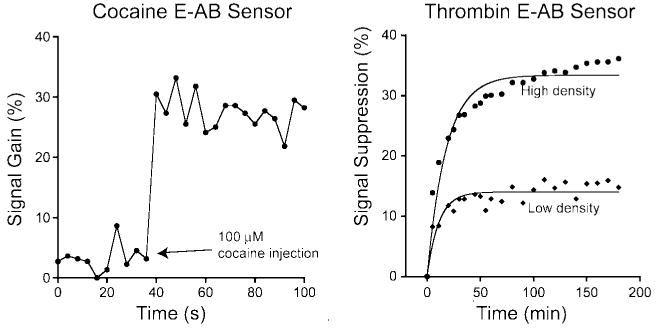Figure 6.

Molecular crowding likely affects E-AB response times. We find, however, that the response time of the cocaine E-AB sensor (left) is extremely rapid: even high-density sensors (∼4 × 1012 molecules/cm2) equilibrate within the 4 s dead time of our electrochemical measurements. The thrombin sensor (right), in contrast, equilibrates much more slowly and exhibits the expected density dependence. The data points represent signal suppression measured after addition of 750 nM thrombin (t = 0). The solid lines represent a single-exponential fit to the data with rates of 0.05 and 0.09 s−1 for the high (1.3 × 1013 molecules/cm2) and low (5.8 × 1011 molecules/cm2) packing densities.
